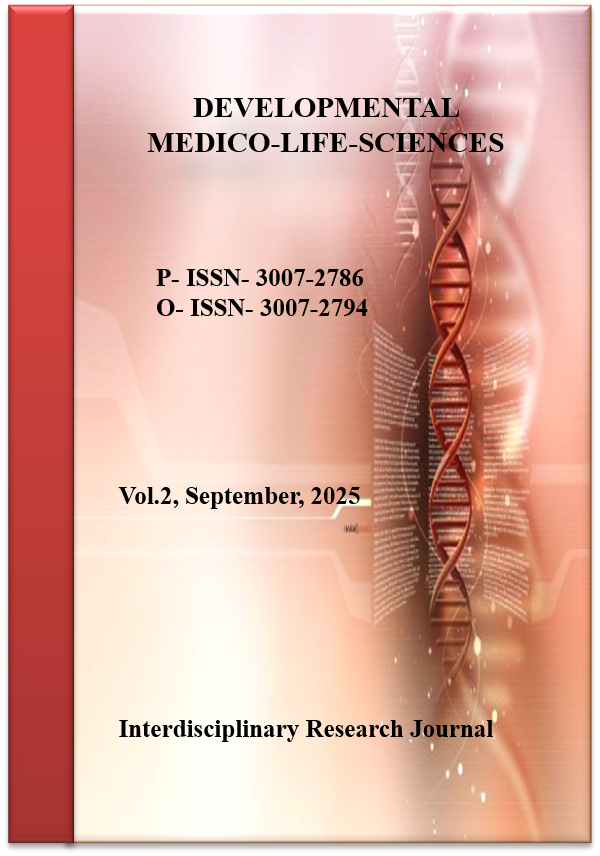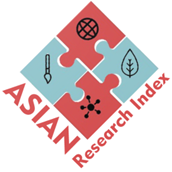Cardiovascular Disease in the Young: The Unseen Burden in Low- and Middle-Income Countries
Cardiovascular Disease in the Young in LMICs
DOI:
https://doi.org/10.69750/dmls.02.09.0154Keywords:
Cardiovascular Diseases, Young Adult, Adolescent, Developing Countries, Risk factors, Primary PreventionAbstract
INTRODUCTION
Cardiovascular disease (CVD) is traditionally recognized as a disorder of older adults, but an alarming epidemiological shift is now evident, particularly in low- and middle-income countries (LMICs). Increasingly, young adults and even adolescents are being diagnosed with conditions once thought to emerge later in life, such as coronary artery disease, myocardial infarction, and stroke [1]. This phenomenon has remained largely underappreciated, making it an “unseen burden” in societies already struggling with dual challenges of communicable and non-communicable diseases. The failure to address premature CVD in the young threatens not only individual well-being but also national productivity, social development, and economic resilience [2].
Changing Epidemiological Trends:
In many LMICs, the incidence of premature CVD is rising more rapidly than in high-income countries. This is partly due to rapid urbanization and globalization, which have altered lifestyles, diets, and patterns of physical activity [3]. Processed foods rich in sugar, salt, and unhealthy fats dominate markets, while physical activity has declined with urban sprawl, unsafe public spaces, and digital lifestyles. Young people are therefore exposed to risk factors obesity, hypertension, diabetes, and dyslipidemia at earlier ages, accelerating the pathophysiological processes that lead to atherosclerosis and vascular dysfunction. Unlike in high-income countries, where early detection and interventions have slowed premature CVD mortality, LMICs remain poorly equipped to respond to this trend [4].
Behavioral and Lifestyle Determinants:
Lifestyle-related factors are central to the premature onset of CVD among young populations in LMICs. Smoking initiation often begins in adolescence, and tobacco use both smoked and smokeless remains common in South Asia, Africa, and parts of Latin America. The growing popularity of e-cigarettes among youth adds an additional challenge [5]. Alcohol consumption, unhealthy diets dominated by fast foods, and prolonged screen time leading to sedentary behavior compound the risk. Moreover, stress related to unemployment, academic competition, and socioeconomic instability further exacerbates cardiovascular vulnerability. These behavioral factors intersect with genetic predispositions in some populations, producing a dangerous combination that pushes CVD onset into younger decades of life [6,7].
Barriers within Healthcare Systems:
Healthcare systems in LMICs are often reactive rather than preventive. Screening programs for hypertension, diabetes, and hyperlipidemia are rare in schools, universities, or workplaces. Preventive health services are poorly funded, while most available resources are diverted toward acute care or infectious diseases [8]. Primary care infrastructure is weak, resulting in delayed diagnoses and late-stage presentations. Young individuals presenting with chest pain or palpitations may have their symptoms overlooked, misdiagnosed, or attributed to psychological stress, delaying life-saving interventions. Even when diagnosed, many patients face barriers in accessing affordable medicines, diagnostic tests, or long-term follow-up due to out-of-pocket costs [9,10].
The Socioeconomic and Psychosocial Impact:
The impact of CVD in young individuals is magnified because this group represents the most productive segment of society. Premature heart disease and stroke reduce years of potential life and impose long-term disability, translating into substantial disability-adjusted life years (DALYs) lost [11]. Families dependent on young breadwinners are pushed into cycles of poverty when illness interrupts income generation. The psychosocial impact is equally severe; young patients often struggle with the stigma of chronic disease, limitations in educational and career opportunities, and the psychological burden of early morbidity. These outcomes erode the capacity of LMICs to achieve sustainable social and economic growth [12].
Environmental and Structural Determinants:
Beyond personal lifestyle factors, structural determinants amplify cardiovascular risk in LMICs. Air pollution, a major issue in urban centers, is strongly associated with early vascular aging and heightened risk of arrhythmias and ischemic heart disease [13]. Poor urban planning, lack of recreational facilities, and unsafe environments limit opportunities for exercise. In addition, limited health literacy and inadequate public health campaigns mean that young populations are often unaware of their cardiovascular risks or the importance of preventive strategies. These environmental and structural factors create a vicious cycle in which the young remain exposed to avoidable risks without adequate systemic safeguards [14].
Policy and Strategic Interventions:
Addressing the unseen burden of CVD in young populations requires a comprehensive, multi-level response. Policymakers in LMICs must implement taxation and regulation of tobacco, alcohol, and unhealthy food industries while simultaneously subsidizing access to healthier dietary options. School- and community-based health education campaigns should prioritize cardiovascular health, promoting healthy eating, regular physical activity, and stress management from early life [7,11]. Universal screening programs targeting blood pressure, glucose, and lipid levels in adolescents and young adults are essential for early risk detection. Strengthening primary care systems, ensuring affordable access to essential cardiovascular medicines, and integrating digital health platforms into routine care can further bridge existing gaps [5,12].
Global and Regional Collaboration:
The burden of premature CVD in LMICs cannot be addressed in isolation. Global health organizations, regional networks, and academic institutions must collaborate to strengthen local data systems, support cost-effective interventions, and share best practices [8,14]. International funding bodies should recognize that investing in the cardiovascular health of the young is a high-return strategy, as it preserves economic productivity and reduces future healthcare costs. Locally tailored interventions, informed by cultural, dietary, and socioeconomic contexts, will be critical to success [15].
CONCLUSION
Cardiovascular disease in the young is a silent but growing epidemic in LMICs, driven by lifestyle changes, structural barriers, and weak healthcare systems. The unseen burden it imposes on individuals, families, and societies threatens to undermine both health and economic development. Urgent action is required to prioritize prevention, improve access to care, and address structural determinants of health. By confronting this challenge head-on, LMICs can protect their youth the backbone of their future and ensure healthier, more resilient societies for generations to come.
Downloads
References
Sun J, Qiao Y, Zhao M, Magnussen CG, Xi B. Global, regional, and national burden of cardiovascular diseases in youths and young adults aged 15–39 years in 204 countries and territories, 1990–2019: a systematic analysis of the Global Burden of Disease Study 2019. BMC Med. 2023;21(1):222. doi:10.1186/s12916-023-02925-4.
Estebsari F, Barati M, Stiri S, Latifi M, Shahsavari A, Sheikh Milani A, et al. Risk factors of cardiovascular disease in young adults: a community-based study in the Iranian context. BMC Public Health. 2024;24(1):2543–52. doi:10.1186/s12889-024-20030-w.
Mocumbi AO, Mensah GA, Sliwa K, et al. Cardiovascular health care in low- and middle-income countries: challenges and opportunities. Circulation. 2024;149(21):1593–606. doi:10.1161/CIRCULATIONAHA.123.065717.
Antza C, Kontis V, Perel P. Prevention of cardiovascular disease in young adults. J Am Coll Cardiol. 2023;82(2):127–37. doi:10.1016/j.jacc.2023.03.022.
Garegnani L, Gaye B, Di Cesare M, et al. Cardiovascular health metrics in low- and middle-income countries: a narrative review. Glob Heart. 2023;18(1):80. doi:10.5334/gh.1176.
Navar AM, Stone NJ, Blaha MJ, Lloyd-Jones DM. Earlier treatment in adults with high lifetime risk of atherosclerotic cardiovascular disease: a clinical perspective. J Am Coll Cardiol. 2022;80(9):829–45. doi:10.1016/j.jacc.2022.06.047.
Ma M, He L, Wang H, Tang M, Zhu D, Sikanha L, et al. Prevalence and clustering of cardiovascular disease risk factors among adults along the Lancang-Mekong River: a cross-sectional study. Glob Heart. 2024;19(1):35. doi:10.5334/gh.1319.
Reif LK, Bonilla JE, Rivas M, et al. Cardiovascular risk factors among young people in Haiti: findings from a community-based study. Glob Heart. 2025;20(1):52–60. doi:10.5334/gh.1435.
Stone NJ, Robinson JG, Gidding S, et al. Managing atherosclerotic cardiovascular risk in young adults: JACC focus seminar. J Am Coll Cardiol. 2022;79(16):1590–604. doi:10.1016/j.jacc.2021.12.016.
Teo K, Chow CK, Vaz M, Rangarajan S, Yusuf S. Cardiovascular risk factors and prevention: a global perspective. Prog Cardiovasc Dis. 2021;64:197–207. doi:10.1016/j.pcad.2021.04.002.
Zhu C, Wu Y, Wang Y, et al. Risk of premature cardiovascular disease and all-cause mortality according to the degree of joint risk factor control: a cohort study. Lancet Reg Health West Pac. 2025;42:100630. doi:10.1016/j.lanwpc.2025.100630.
Wurie HR, Ramsay M, Maio A, Byass P. Cardiovascular disease in low- and middle-income countries: epidemiological profile and current perspectives. Glob Cardiol Sci Pract. 2020;2020:e202010. doi:10.5334/gcsp.120.
Gangavelli A, Tanikella R, Sharma A, et al. Premature cardiovascular mortality in the United States: trends and socioeconomic disparities. Circulation. 2021;144(24):2005–16. doi:10.1161/CIRCULATIONAHA.121.056658.
Coronado F, Kuklina EV, Croft JB, et al. Global responses to prevent, manage, and control cardiovascular disease: a review. Prev Chronic Dis. 2022;19:E18. doi:10.5888/pcd19.220347.
World Heart Federation Roadmap Writing Group. The World Heart Federation roadmap for secondary prevention of cardiovascular disease. Glob Heart. 2023;18(1):45–56. doi:10.5334/gh.1278.






















